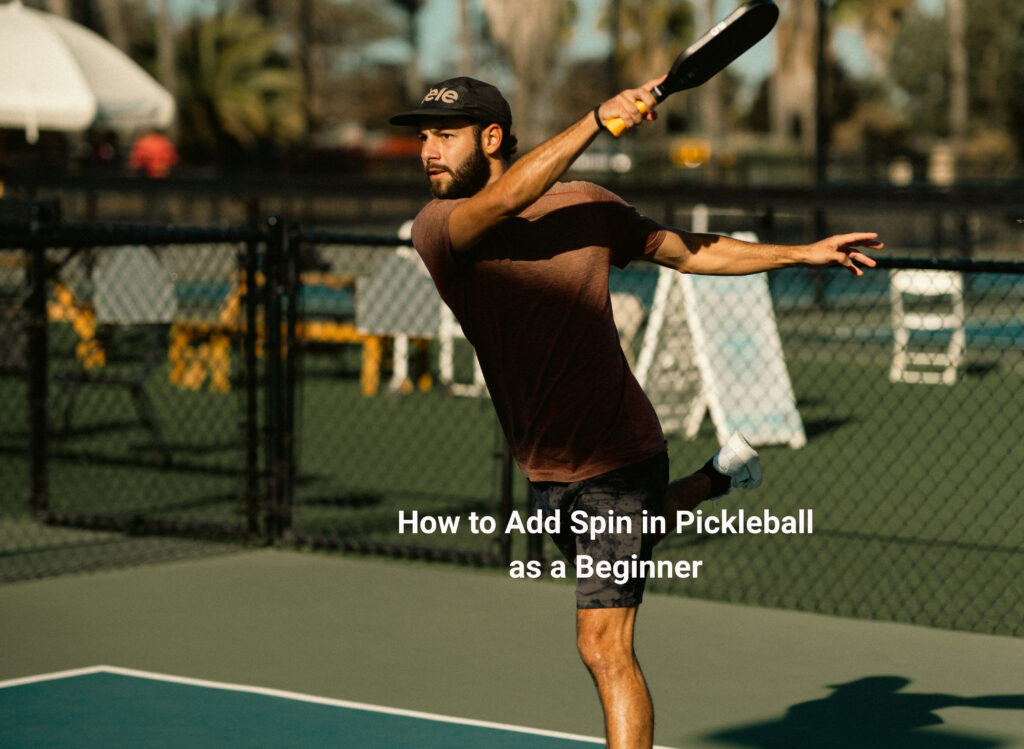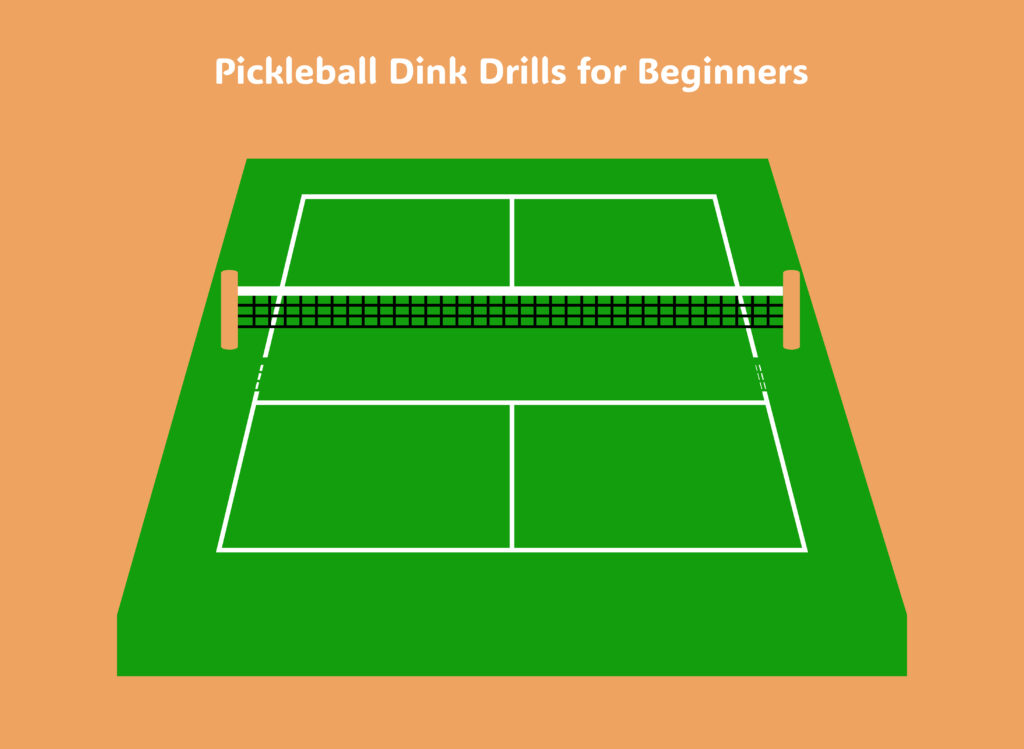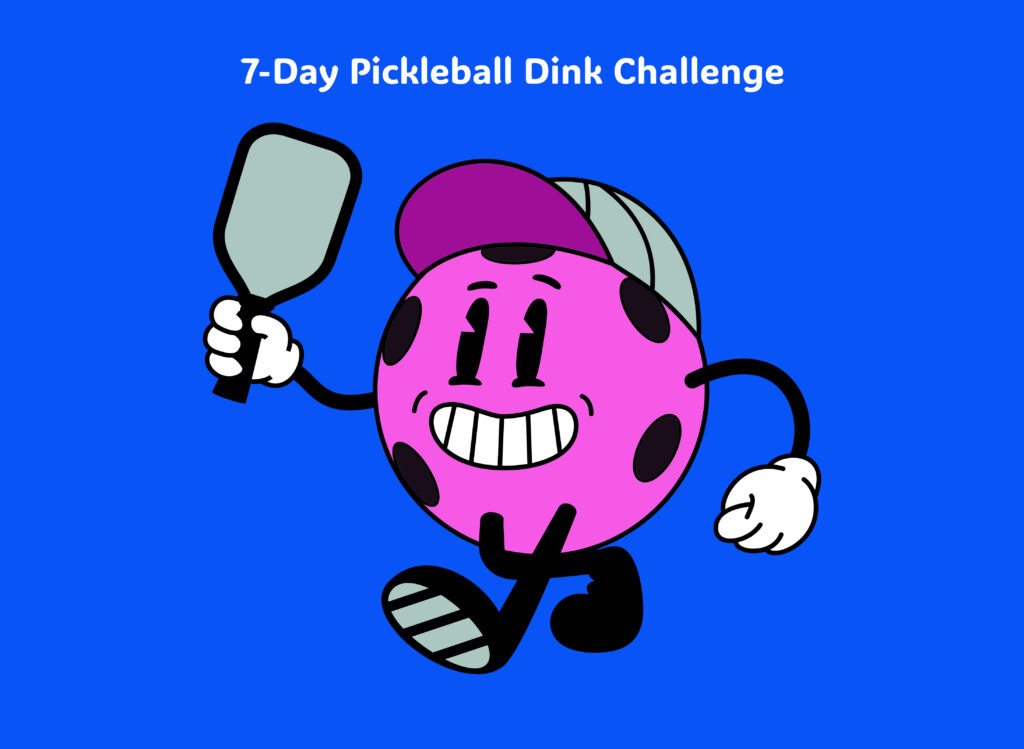- Introduction: Spin in Pickleball
- 1️⃣ Understanding the Different Types of Spin in Pickleball
- 2️⃣ How to Generate Topspin in Pickleball
- 3️⃣ How to Add Backspin (Slice) to Your Shots
- 4️⃣ How to Use Sidespin in Pickleball
- 5️⃣ Beginner Drills for Practicing Spin in Pickleball
- 6️⃣ Common Mistakes Beginners Make When Learning Spin
- 7️⃣ Final Thoughts: Mastering Spin in Pickleball as a Beginner
Introduction: Spin in Pickleball
Spin in Pickleball is a powerful tool, allowing players to control ball movement, increase shot precision, and add unpredictability to their game. Whether you are just starting or working on improving your fundamentals, learning to generate spin will take your game to the next level.
For beginners in the UK’s growing pickleball scene, understanding spin can be overwhelming at first. However, mastering topspin, backspin (slice), and sidespin will improve your consistency, help you win points, and make your shots more difficult for opponents to handle. This guide will walk you through each type of spin, how to add it to your game, and step-by-step drills to help you develop control and accuracy.
1️⃣ Understanding the Different Types of Spin in Pickleball
Before you learn how to add spin, it’s important to understand how each type of spin affects the ball’s movement. In pickleball, there are three main types of spin that beginners should focus on:
✅ Topspin – Causes the ball to dip downward quickly and bounce higher on the opponent’s side. This spin is great for aggressive shots that stay in play.
✅ Backspin (Slice) – Makes the ball float slightly and stay lower after bouncing, making it harder for opponents to attack.
✅ Sidespin – Causes the ball to curve left or right in the air, making it more unpredictable and tricky for opponents to return.
Why is spin important for beginners?
🔹 Helps keep shots in play by controlling ball trajectory.
🔹 Makes returns more difficult for opponents, especially in dinking battles.
🔹 Creates more attacking opportunities when hitting passing shots.
🔥 Key takeaway: Understanding how spin affects ball movement is the first step to mastering spin techniques.
2️⃣ How to Generate Topspin in Pickleball
Topspin is a useful spin for keeping your shots aggressive while ensuring they don’t go out of bounds. When hit correctly, topspin makes the ball dip faster over the net and bounce higher on your opponent’s side, making it difficult to return.
How to Hit a Topspin Shot as a Beginner:
✅ Use a low-to-high swing – Start your paddle below the ball and brush upward during contact.
✅ Close your paddle face slightly – Tilt the paddle forward so the top edge is slightly ahead of the bottom edge.
✅ Follow through over your shoulder – Ensure a smooth finish to maintain control.
Best Situations to Use Topspin:
✔ Forehand drives – Helps add control and power.
✔ Passing shots – Forces opponents to react quickly to deep, dipping shots.
✔ Drop shots from the baseline – Creates a soft but controlled arc over the net.
Beginner Drill for Topspin:
🔹 Stand 10 feet from a wall and practice brushing the ball upward with your forehand. Focus on getting the ball to dip downward after hitting the wall.
🔥 Key takeaway: Topspin helps control aggressive shots and keeps the ball in play, making it a great first spin for beginners to learn.
3️⃣ How to Add Backspin (Slice) to Your Shots
Backspin, also known as slice, is a defensive and control spin that makes the ball stay low after bouncing. This spin is useful for slowing down the game and keeping the ball unattackable for opponents.
How to Hit a Backspin Shot as a Beginner:
✅ Use a high-to-low swing – Start your paddle above the ball and slice downward through contact.
✅ Open your paddle face slightly – The paddle should be tilted backward to create backspin.
✅ Follow through gently – Keep the motion smooth and controlled.
Best Situations to Use Backspin:
✔ Dinking battles at the net – Helps keep dinks low and unattackable.
✔ Defensive drop shots – Slows the ball down to prevent counterattacks.
✔ Return of serves – Adds control and makes it harder for opponents to hit aggressive third shots.
Beginner Drill for Backspin:
🔹 Stand at the kitchen line and practice hitting soft dinks with a slicing motion to keep the ball low.
🔥 Key takeaway: Backspin is best for defensive shots, keeping the ball low and making it harder for opponents to attack.
4️⃣ How to Use Sidespin in Pickleball
Sidespin is an advanced spin that causes the ball to curve left or right in the air, making it harder for opponents to predict where the ball will land. This spin is especially useful on serves and angled shots.
How to Hit a Sidespin Shot as a Beginner:
✅ Swing across the ball sideways – Instead of swinging straight through, move your paddle side-to-side when making contact.
✅ Angle your paddle slightly – Tilt it left or right depending on the direction you want the ball to curve.
✅ Follow through in the direction of the spin – This will help maintain control.
Best Situations to Use Sidespin:
✔ Spin serves – Forces opponents to adjust their return.
✔ Crosscourt dinks – Adds unpredictability to short shots.
✔ Sideline passing shots – Makes the ball curve away from opponents.
Beginner Drill for Sidespin:
🔹 Practice hitting soft forehands with a slight sideways brush, focusing on making the ball curve.
🔥 Key takeaway: Sidespin is best for serves and angled shots, making it harder for opponents to predict returns.
5️⃣ Beginner Drills for Practicing Spin in Pickleball
To improve your spin control, try these beginner-friendly drills:
Drill 1: Topspin Wall Rally
🔹 Stand 10 feet from a wall and hit forehand shots with an upward motion to generate topspin.
Drill 2: Backspin Dinks at the Kitchen
🔹 Practice soft dinks using a slicing motion to add backspin and keep the ball low.
Drill 3: Sidespin Serve Challenge
🔹 Aim serves toward different parts of the service box while applying sidespin.
🔥 Key takeaway: Practicing with drills will help you develop consistency and confidence in your spin shots.
6️⃣ Common Mistakes Beginners Make When Learning Spin
Even though spin is a great tool, many beginners make mistakes when trying to add spin too soon. Here are the most common errors and how to avoid them:
❌ Overhitting the ball – Focus on control rather than power when adding spin.
❌ Using the wrong grip – Make sure your grip is relaxed to allow smooth movement.
❌ Swinging too fast – Start with slow, controlled motions before increasing speed.
❌ Forgetting shot placement – Spin is most effective when combined with smart shot placement.
🔥 Key takeaway: Start with small adjustments and build up your spin technique gradually.
7️⃣ Final Thoughts: Mastering Spin in Pickleball as a Beginner
Adding spin to your pickleball game will make you a more skilled and strategic player. As a beginner, focus on:
✔ Learning how each type of spin affects the ball.
✔ Practicing with simple drills to develop control.
✔ Using spin strategically rather than overusing it.
👀 Enjoyed this read? Fancy levelling up your game even more? Keep reading Dink Quest for the best pickleball tips, drills, and news in the UK!
🎯 Check out these popular posts next:
📬 Subscribe to the Dink Quest newsletter to Stay in the Loop and be the first to get new blog posts, UK pickleball news, tips, player spotlights and exclusive offers
👉 Click here to subscribe now
Get discounts and exclusive offers for Paddles, clothing and accessories from our shop
We’ve got plenty more where that came from! Whether you’re working on your third shot drop, curious about dinking strategies, or just figuring out how to hold your paddle without it flying across the court we’ve got you covered.
👉 Keep reading, keep learning, and keep dinking smart. Let’s grow the game together, one dink at a time. 💚
See you on the court!
The Dinkquest Team UK 🏓



